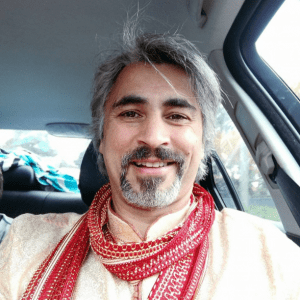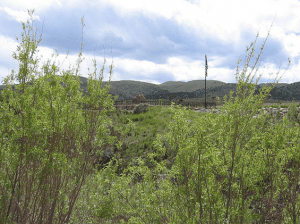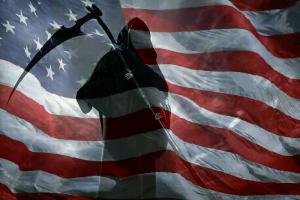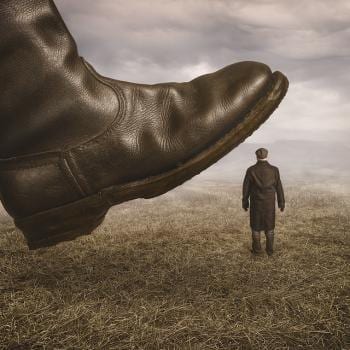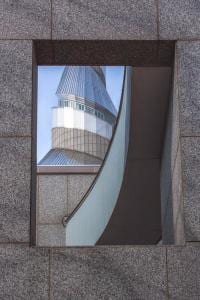Guest post by Ganesh Cherian, Wellington, New Zealand.
On September 11th the LDS Church will mark the 160th anniversary of the bloodiest event in church history.
In 1857 at the height of Utah pioneer hysteria from fear of government invasion, over 120 men, women, children and infants were massacred by otherwise devout Mormons.
This event took place in a beautiful part of Southern Utah, fifteen minutes north of St George called Mountain Meadows.
An Arkansas wagon train which ran into trouble getting supplies on their way to California ran foul of the citizens of Cedar City. The local militia whose leaders were also Stake Presidents and Bishops looked to teach them a lesson. Their unjustified attack on the travellers escalated to the point that they felt letting them go would cause reprisals. They then conspired to eliminate them.
After a siege and surrender, they marched the emigrant party out of the valley under armed guard and at a given signal turned their guns on the unsuspecting victims and slaughtered them.
The site is just off Highway 18 along a gravel road. It’s a pretty valley with a little brook running through it. In September it’s still scorchingly hot, but the access to fresh water and the shade from the sun supplies some relief from the heat. It’s also a space that is safe and relatively easy to protect.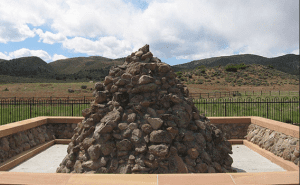
Today three monuments stand on the site. There is the original pyramid of stones (erected by U.S. troops on the discovery of the scene in 1859) which now includes a wall and a fence. There is a granite headstone on the other end of the meadow, and up on the hill overlooking the scene, a marble wall has been erected engraved with the names of the dead and survivors. The granite memorial states:
EVER REMEMBERED
In honor of those who rest in this
field. The were innocent and died
in unjust attacks that began in
September 7, 1857. They were
defending their friends and family
who buried them before leaving the
protection of the camp
To the other victims of the Mountain
Meadows Massacre who lie in
unknown graves, rest in peace, and
be assured you are remembered.
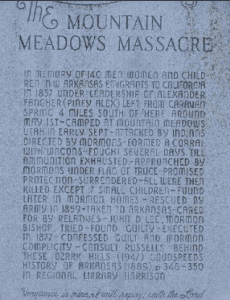 The white marble wall is particularly poignant. There is something harrowing about running your hands over names carved into stone. The people become real, and you wonder about their lives; what lead them to this place; what were their thoughts during the siege. Then you wonder at the horror of their last moments. There is also a reverence that accompanies this space. You treat the ground as sacred. You stop and ponder, and tears come quickly followed by guilt and shame.
The white marble wall is particularly poignant. There is something harrowing about running your hands over names carved into stone. The people become real, and you wonder about their lives; what lead them to this place; what were their thoughts during the siege. Then you wonder at the horror of their last moments. There is also a reverence that accompanies this space. You treat the ground as sacred. You stop and ponder, and tears come quickly followed by guilt and shame.
The Mountain Meadows Massacre is the LDS Church’s genocide, where groupthink and fear usurped Christian values. Mountain Meadows showed how our tradition’s forebears lost sight of their spiritual identity in a moment of hot headedness. Mountain Meadows demonstrates to us, living members of the LDS Church, what happens when allegiance to authority become more important than doing what is morally and ethically correct.
Every member of the church, who can, should come here. If they are unable to make the journey, they should read about it and study this event. It should be a requirement of discipleship.
But few do. There is no visitors centre and no missionaries. There is no acknowledgement (beyond tokenism), no conference talks, no directive to visit, no attempts to learn from this tragedy, and no desire to bring it up.
It’s embarrassing, it’s distressing, and it’s shameful. It’s a blight on our wish to be a force for good in the world. And this is ironically the reason ‘Mountain Meadows’ should be prominent in our memory! We learn the most from our failures; we give the most when we acknowledge our wrongdoing, we come closer to Christ when we see ourselves as a body, capable of collective sin.
President Uchtdorf pleaded:
“God’s promises are sure, and certain….but this cannot happen if we hide behind personal, dogmatic, or organizational facades. Such artificial discipleship not only keeps us from seeing ourselves as who we really are, but it also prevents us from truly changing through the miracle of the Savior’s Atonement.”
If we are always the hero, if we are always right, there is nothing to change. We cannot get better.
Erma Stubbles said it best:
“Christianity suffers from a bad case of Disney princess theology. As each individual reads Scripture, they see themselves as the [hero] in every story. They are Esther, never Xerxes or Haman. They are Peter, but never Judas. They are the woman anointing Jesus, never the Pharisees. They are the Jews escaping slavery, never Egypt. For the citizens of the most powerful country in the world, who enslaved both Native and Black people, to see itself as Israel and not Egypt when it is studying Scripture, is a perfect example of Disney princess theology. And it means that as people in power, they have no lens for locating themselves rightly in Scripture or society- and it has made them blind and utterly ill equipped to engage issues of power and injustice. It is some very weak Bible work”.
When Germany’s Christianity failed them and they were confronted by their atrocities, and they vowed to change. They held themselves to account, re-evaluated their power structures, rooted out their ‘Othering’ and opened up their places of shame as sacred grounds of remembrance. They have redeemed themselves and educated the world in the process.
We must do the same:
Many Mormons have visited the death camps of Dachau or Auschwitz, the Twin Tower monument in New York, and the Vietnam wall in Washington D.C. They have run their hands over names carved in stone and wept for the loss of innocent lives. But it’s a sad indictment that very few have been 15 minutes north of St. George to an almost forgotten Meadow.
I hope on this 160th anniversary; this particular sacred ground is littered with flowers, that US Highway 18 is choked with cars making the pilgrimage; that nearby youth complete a trek from Cedar city to Mountain meadows recounting the stories of an innocent wagon train which fell prey to fear and groupthink.
I hope that at General Conference an Apostle pleads for forgiveness on behalf of the church. In that same moment – I hope we are challenged to identify ways that we ‘Other’ people to their exclusion and sometimes death and that we covenant never to repeat the Mountain Meadows Massacre or participate in anything like it.

